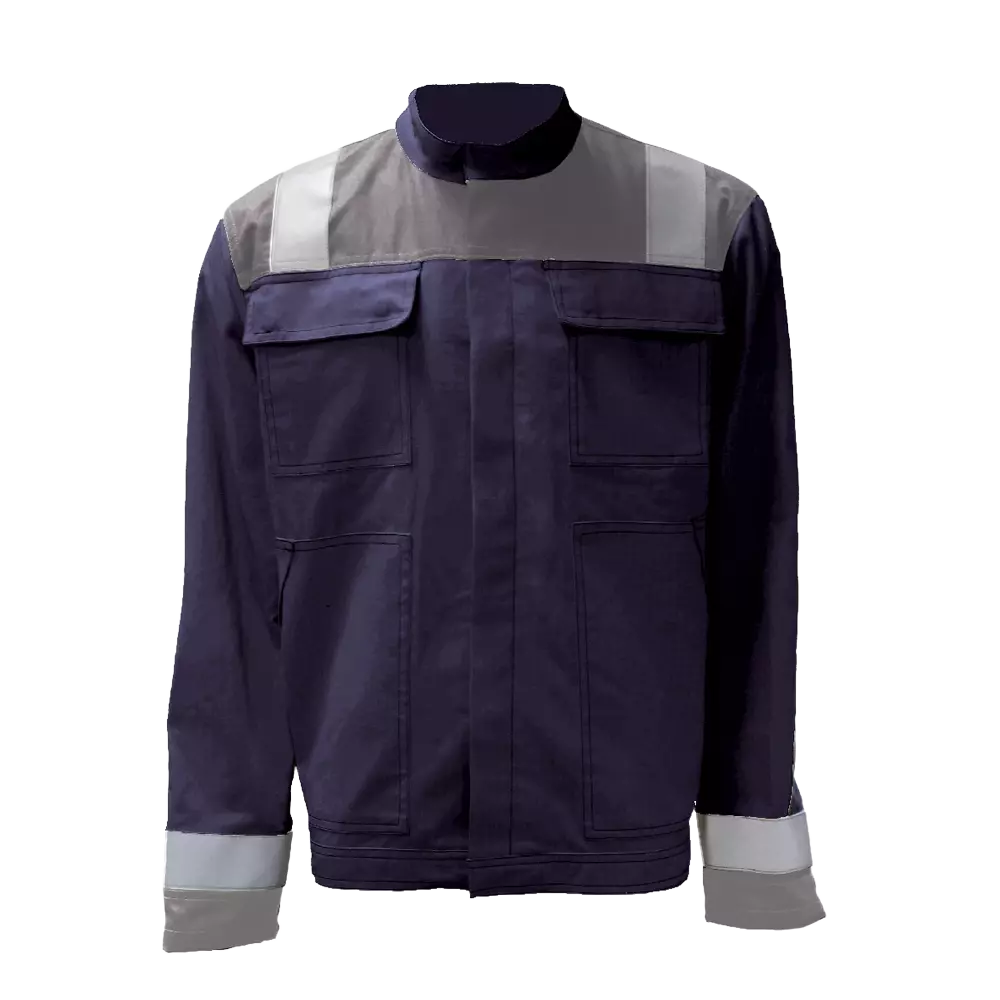
Product description
Material: TenCate TECAPRO ™ BG 9045, FR 79% Cotton Fabric, 20% Polyester and 1% Carbon fiber (450 g/m2), satin weave, high wear resistance, treated with FR coating that offers good impurities and the fabric retains softness and airiness.
Maintenance: industrial laundering 75 ° C
Classic cut jacket with Russian collar. Chest flap pocket and pocket for mobile phone. Two sewn front lower flap pockets. Control of power in the wrist. Reflective tape in the shoulder area and at the ends of the sleeve.
Color: navy
Size: S-XXL
Standard: EN ISO 11612, EN11611, EN1149
MADE IN EUROPE
Barcode: 3856024213950
Unite of measure: pcs
Packaging/minimum order quantity: 1
Full box quantity: 10
About Jacket
Work Jackets provide essential protection against cold and harsh weather conditions while on the job. Designed with durability and functionality in mind, these jackets offer insulation, comfort, and practical features like secure pockets for tools or personal items. Perfect for outdoor work environments.
- Heat & Flame Resistance
- High Visibility
- Electrical Protection
- Welding
Standards and labels
Lacuna delivery terms
Free delivery for all Lacuna products
990,63 kr
Choose size
Free delivery